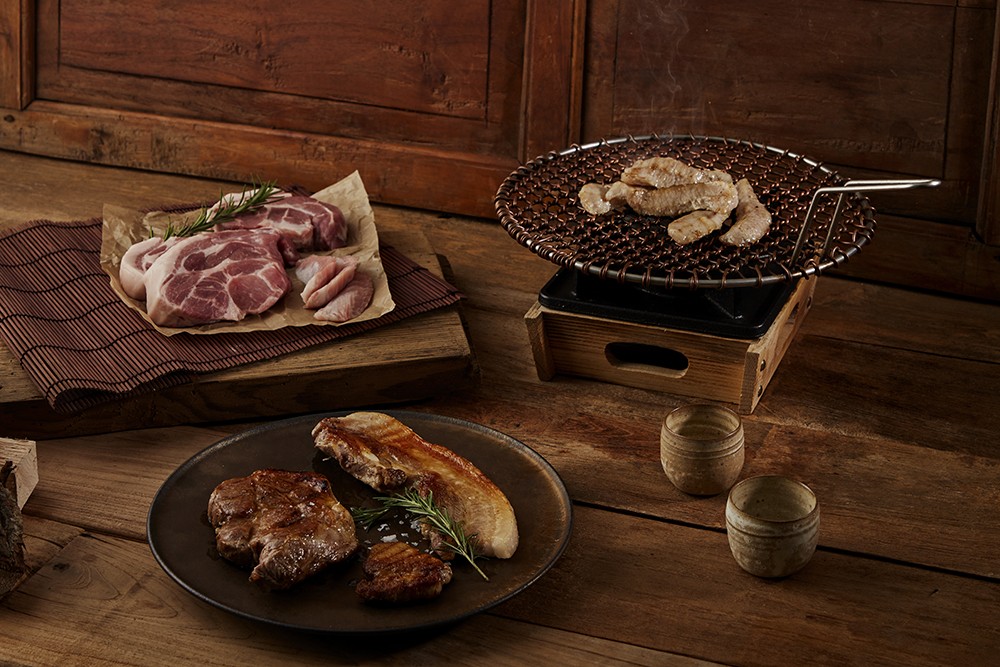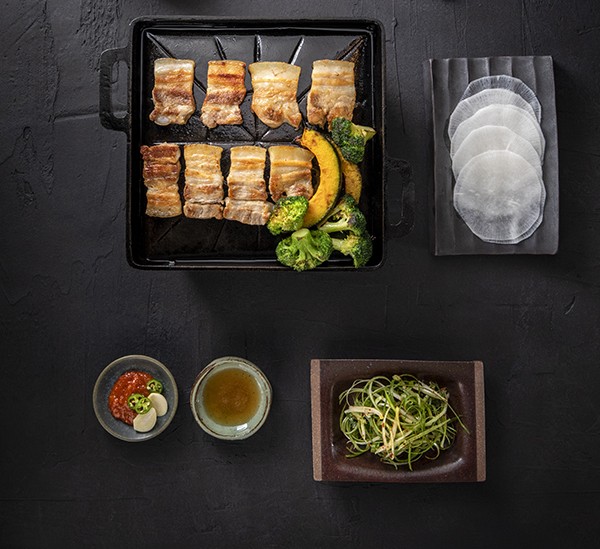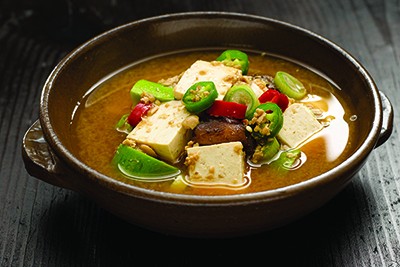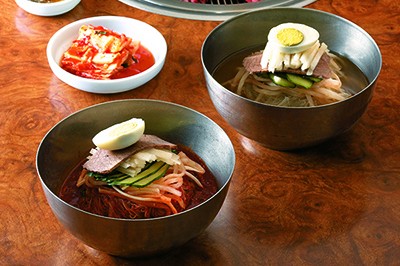한식 읽기 좋은 날
Vol 60. The Joy of Grilling
K-BBQ and its Companions
Beneficial Korean Recipes

Many Korean foods are spreading worldwide under the now-familiar “K” suffix. The first (and most successful) example is K-BBQ, whose international fame is just as much due to the foods served alongside the meat as the table-grilled meat itself. Let’s take a look at some dishes that are often served with K-BBQ.
Article Cha Yeji (Editorial Team)
K-BBQ is much more than grilled meat
When setting meat onto a heated cast-iron plate, you will hear a comforting hiss. After flipping the pieces of juicy meat, everyone waits for the moment when the meat is cooked enough to eat. The next decision to be made is whether to dip the meat in salt, sesame oil, or ssamjang (seasoning made by mixing gochujang with various ingredients). After dipping and taking your first bite, the first thing you will notice is the chewiness—which is soon followed by the savory flavors of the meat’s juices. It is no surprise that the Korean grilled meat experience is sought out by people all around the world.
As can be seen from some foreigners installing a cast-iron grilling plate in their home because of their love for K-BBQ, there is clearly something about this popular food that has an almost addictive appeal. It is a question that cannot be answered by looking solely at the cooking technique: there is no logical reason why Korean-style grilling is favored more than, for example, steak grilling. One would be better served by gaining a comprehensive understanding of elements both directly and indirectly related to food that shape K-BBQ.
First and foremost, K-BBQ is more than food: it is a culture. It goes beyond the mechanics of grilling and eating meat. Rather, it is a culture that also encompasses the table setting, various methods of grilling, and favorite cuts of meat. The first important feature is the grill plate. Meat can, of course, be cooked in a pan on a gas stove. When discussing K-BBQ, however, a “grill plate” refers to a (usually) cast-iron plate that is attached to the table and designed expressly for grilling meat. The practice of grilling meat in the center of the table and then immediately eating it attests to the Korean notion that food must always be warm/hot—one that is also evident in the affinity for soup served in single-sized stone pots to ensure that it stays hot for as long as possible. The desire to watch meat being cooked over a hot fire and eat it before it has a chance to cool is an element of Korean culinary culture that is proving to be acceptable to increasingly more non-Koreans.
The main player of K-BBQ is, of course, meat. It is never, however, served on its own but with a number of supplementary foods that accentuate or complement the meat’s flavors, such as: pachae (finely-sliced green onion), pickled onion, jangajji (pickled vegetables), sliced radish, garlic, and peppers. There is also a separate host of options of things to dip the meat in, such as ssamjang, sesame oil, and myeolchijeot (salted anchovies). If desired, they can all be wrapped in a lettuce leaf and eaten as a ssam (wrap).
The list of accompanying foods does not end there. Often, grilled meat is eaten alongside a bowl of rice and jjigae (stew). The presence of rice and stew does not mean that meat is “demoted” from the main to a side dish: it simply represents the desire to eat all kinds of great-tasting food in one meal.

K-BBQ
Naengmyeon and fried rice: K-BBQ’s “dessert”
The naengmyeon (cold buckwheat noodles) or fried rice eaten after the meat is all gone is the rough equivalent of a dessert. It is different from the typical dessert—something sweet (e.g. cake, ice cream) or coffee—but nevertheless regarded as the final part of the meal.
Naengmyeon is made by creating extremely thin noodles from a buckwheat batter, boiling them, and then chilling them in cold water. It is served in a cold broth (usually with ice floating in it) and, if the customer desires, with a spicy, pepper-based seasoning. It has become customary to eat a small bowl of naengmyeon after finishing the meat (perhaps due to the cold-hot contrast), but there are many who enjoy pairing a hot piece of meat with a chopstick-full of naengmyeon to create a flavor that is beyond words!
After finishing the naengmyeon, which has a temperature similar to that of sherbet, is the K-BBQ meal finally over? There is no clear answer, because there are those who believe that the only way to end a meal is with rice. Even if they already had rice with the meat and jjigae, there is an almost instinctive desire shared by many Koreans to have yet another bowl of rice.
To be sure, post-meat fried rice is very different from the typical bowl of rice. The rice is fried in the oil that seeped out of the meat while grilling with several side ingredients: usually, kimchi, laver, and sometimes flying fish roe or cheese. The rice grains are savory because of the oil, and adding kimchi helps counter the greasiness. It is only when the last grains have been scraped off of the plate that the K-BBQ meal is finally finished.
The foods served with Korean-style grilled meat do more than whet the appetite or balance out the meat’s greasy odor—although these are certainly important functions. What they also do is create harmony, which is the first priority of Korean cuisine. Meat is paired with vegetables to ensure that foods of complementary dispositions are eaten together. The serving of hot and cold foods together is likely also based on this concept. As a final touch, what is left over at the end is mixed together with rice to create something new. The next time you enjoy K-BBQ, what you eat will taste even better if you understand how everything on the table comes together in harmony.

Doenjangjjigae

Naengmyeon

 한국어
한국어
 English
English






